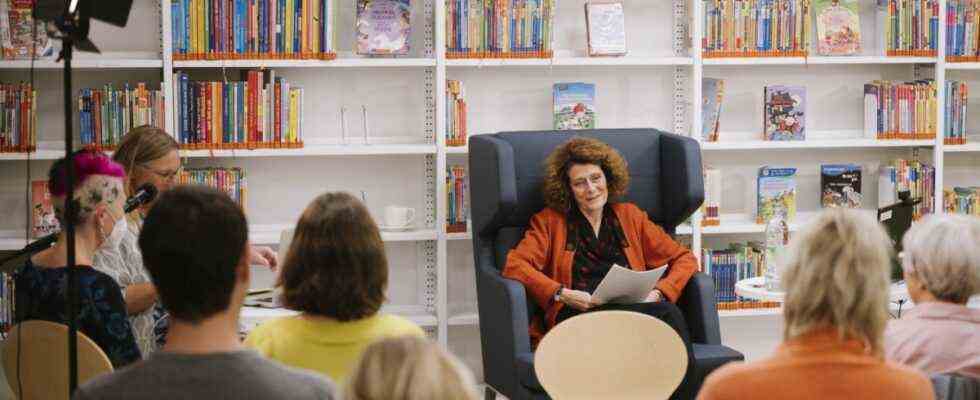Rachel Salamander was born in 1949 as the daughter of two Holocaust survivors in a camp for so-called displaced persons in Deggendorf. She grew up homeless in a camp in Föhrenwald near Wolfratshausen. The 72-year-old literary scholar, journalist and bookseller spoke about her childhood and life in the camp on Monday evening in Unterhaching at an event organized by the adult education center and community library. The accommodation of displaced persons and concentration camp survivors is a largely unknown chapter in post-war history that Salamander would like to raise awareness with her lectures.
Her parents survived the Holocaust, but their mother died in Munich in the early 1950s. “She did not survive,” says the daughter. In 1956 she moved to Munich with her father, in 1983 she opened the city’s first bookstore for Jewish literature, and in that year she was awarded the Heinrich Heine Prize.
Because Great Britain hardly accepted any fleeing Jews in its former mandate of Palestine, hundreds of thousands of former concentration camp prisoners ended up stranded in the country of their tormentors, of all places, after the end of the war. In order to offer these people a place to stay, the Allies set up camps for displaced persons a. It was the responsibility of the US Army to take care of them, the administration to the predecessor organizations of the UN Refugee Aid. There were 19 such camps in the Munich district alone. Often forced laborers had previously been housed in the buildings or the facilities were built right next to the concentration camps. Food was rationed and it was cold, recalls Salamander.
The camp language was Yiddish, which is now almost extinct, and Rachel Salamander only learned German at school. The residents organized themselves, held concerts and readings, founded interest groups to draw attention to their situation, and even published newspapers – often printed in the same printing works that had distributed anti-Semitic propaganda papers during the war. Just as a few years earlier nobody wanted to know why their Jewish doctor, neighbor or colleague had disappeared, after the end of the war nobody wanted to know anything about those who had survived the atrocities, reports Salamander. Rachel Salamander did not get a passport until 1992 from the Federal Republic of Germany, which treated displaced persons as “homeless foreigners”.
In the meantime, the history of the camps can be traced back to the Badehaus memorial site in Waldram. This episode of German history has not reached the public’s consciousness any more than the question of who some silver cutlery, the oil painting in the living room or “the great-grandmother’s beautiful sideboard” in many German households originally belonged to, complains Salamander. The last camp was not closed until twelve years after the end of the war. It lasted as long as the Nazi rule.

